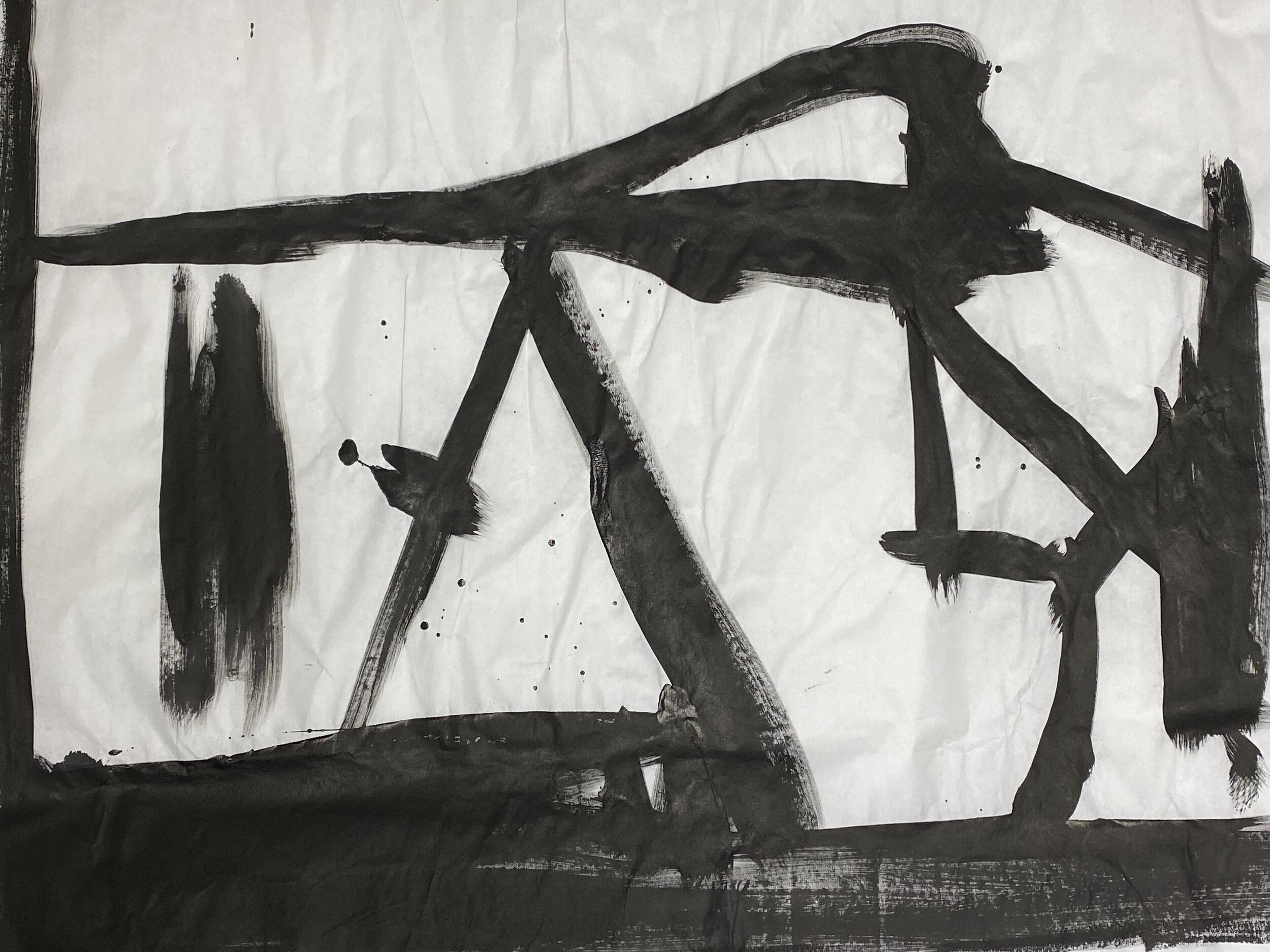Improvisation ‘18
This body of work explores and considers different means and approaches of improvisation. Considering improvisation in its primary context of music, this portfolio establishes different guises of improvisation and seeks to establish visual equivalents in the context of the visual arts.
Referring to the extensive breadth of critical commentary concerning improvisation in the sonic arts, the models and categorisations of improvisation used here are devised and coined by the improvisatory practitioner Derek Bailey in his book; Improvisation: Its Nature and Practice in Music.
‘Non-Idiomatic Improvisation’
“Non-idiomatic improvisation is most usually found in so-called ‘free’ improvisation and while it can be highly stylised, is not usually tied to representing an idiomatic identity.” * This portfolio explores the guise of ‘Non-Idiomatic Improvisation’ and consists of freely improvised responces through the handling and execution of medium and technique. The following pieces also consider and reimagine the themes of edited and amended improvisation as identified in the freely improvised solos of Miles Davis and his collaborations with the the Producer Teo Macero, where in post production Macero would edit and amend Davis’s final solos through the cutting and splicing of tape.
*Derek Bailey, Improvisation: its Nature and Practice in Music, Da Capo Press, 1992

Non-Idiomatic improvisation: Untitled 1, mixed media collage on paper,

Non-Idiomatic improvisation: Untitled 2, mixed media collage on paper,
‘Idiomatic Improvisation’
“Idiomatic improvisation, is mainly concerned with the expression of an idiom - such as jazz, flamenco or baroque - and takes its identity and motivation from that idiom.” * This portfolio explores the guise of ‘Idiomatic Improvisation’ and consists of visual improvisations through the handling and execution of medium and technique responding to particular themes or idioms.
*Derek Bailey, Improvisation: its Nature and Practice in Music, Da Capo Press, 1992

Idiomatic Improvisation:Untitled 2, ink on rice paper, 90cm x 60cm

Idiomatic Improvisation:Untitled 3, ink on rice paper, 90cm x 60cm

Idiomatic Improvisation:Untitled 4, ink on rice paper, 90cm x 60cm

Idiomatic Improvisation:Untitled 5, ink on rice paper, 90cm x 60cm

Idiomatic Improvisation:Untitled 6, ink on rice paper, 90cm x 60cm

Idiomatic Improvisation:Untitled 7, ink on rice paper, 90cm x 60cm